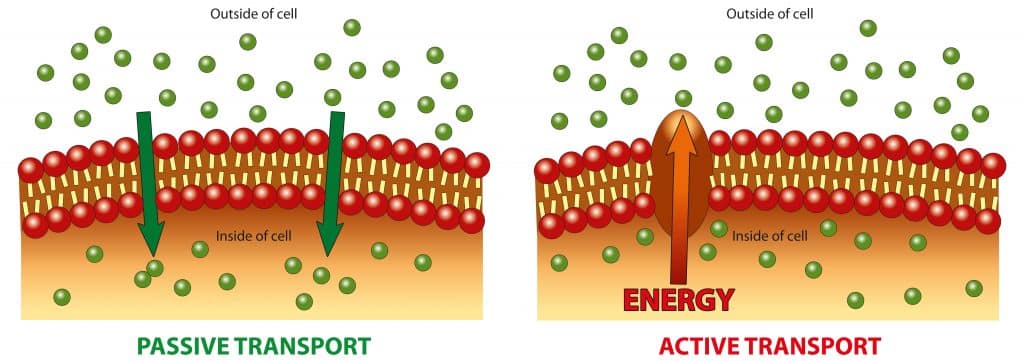Section 5: Cellular Transport

Every living cell exists in a liquid environment that it needs to survive. To keep a cell’s internal conditions stable, the plasma membrane regulates the movement of molecules from one side of the membrane to the other. The plasma membrane is selectively permeable, meaning that only certain molecules are allowed in and out of cells. Diffusion is the tendency of particles to move from an area of higher concentration to an area of lower concentration. It’s the primary method by which small molecules move across a selectively permeable membrane, allowing certain molecules to freely enter and exit the cytoplasm. In cells, substances can diffuse across membranes without requiring energy. This is called passive transport. Facilitated diffusion is a type of passive transport where the molecules cannot diffuse on their own, so they move through protein channels in the membrane.
During active transport, molecules move from an area of low concentration to an area of high concentration, making it the opposite of diffusion. Energy is required to help move particles across the membrane against a force. As a result, molecules flow against the concentration gradient. The concentration gradient refers to the change in concentration.

Semi-permeable membranes allow substances to diffuse or move from areas of higher concentration to areas of lower concentration. One important substance that crosses membranes through passive transport is water. The diffusion of water across a selectively permeable membrane is called osmosis. It enables the cell membrane to regulate a cell’s internal environment, called homeostasis. Osmosis affects cells depending on the type of solution they are placed in. There are three types of solutions: isotonic, hypertonic, or hypotonic. If a cell is immersed in an isotonic solution, the cell’s volume remains the same. The cell shrivels and dies from water loss if placed in a hypertonic solution. Water enters the cell if placed in a hypotonic solution, causing it to swell and potentially burst.
Endocytosis and exocytosis are the processes by which cells move substances in and out of the cell that are too large to pass through the cell membrane. In endocytosis, large particles are engulfed and then enclosed by the cell membrane, bringing a substance into a cell. In exocytosis, large particles are released from the cell by secreting or expelling them.

Review:
- What is active transport?
- Explain how osmosis affects cells.
- Compare endocytosis and exocytosis.
